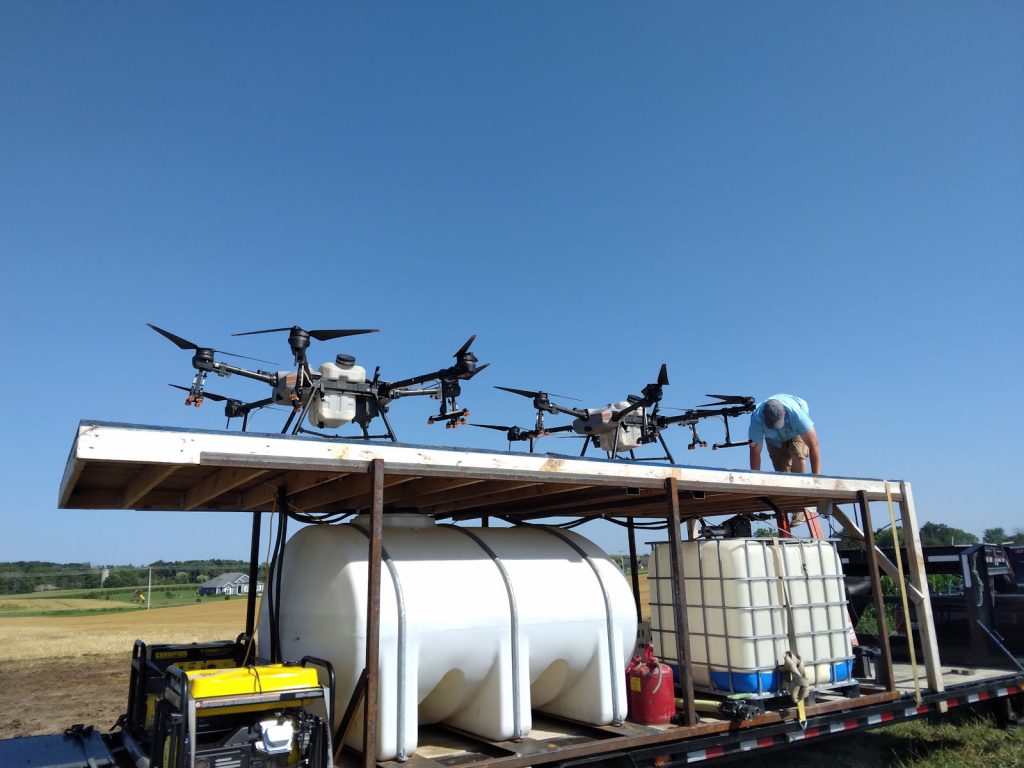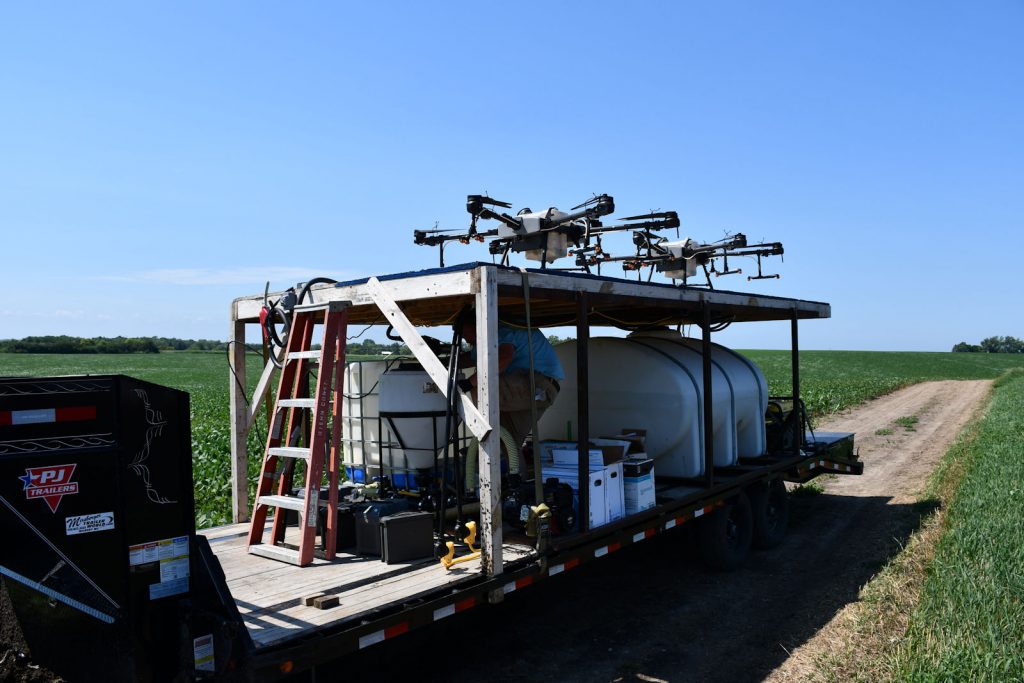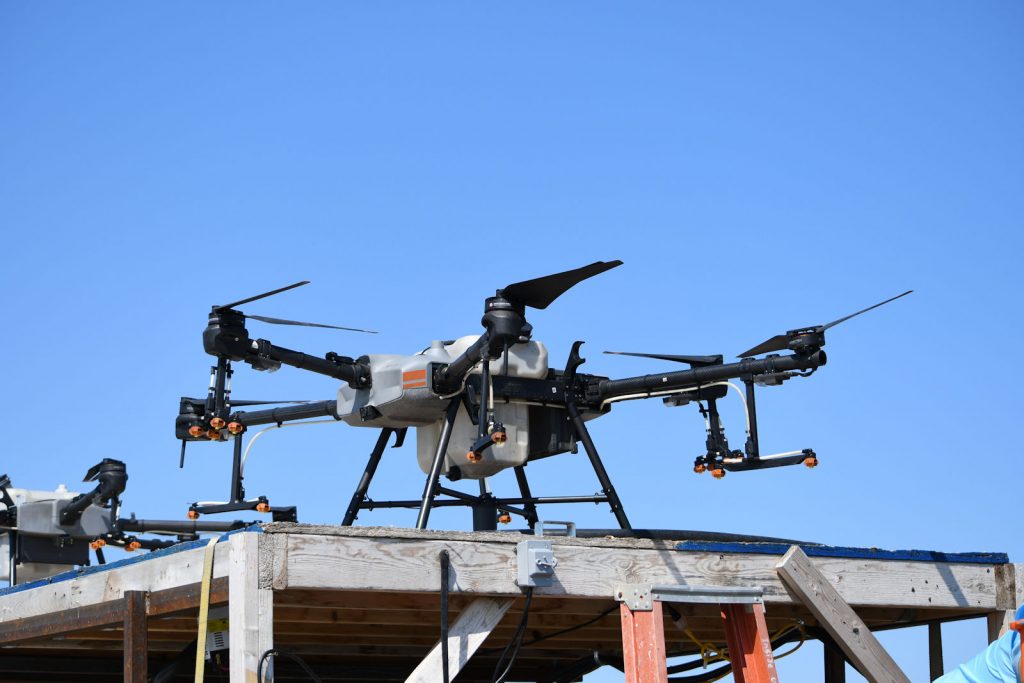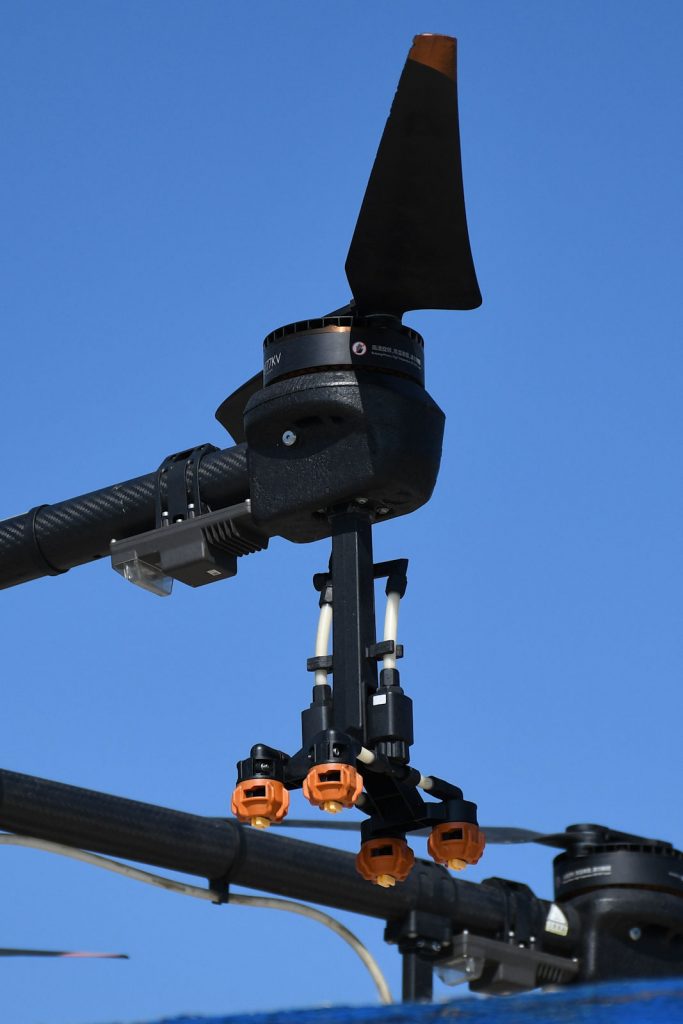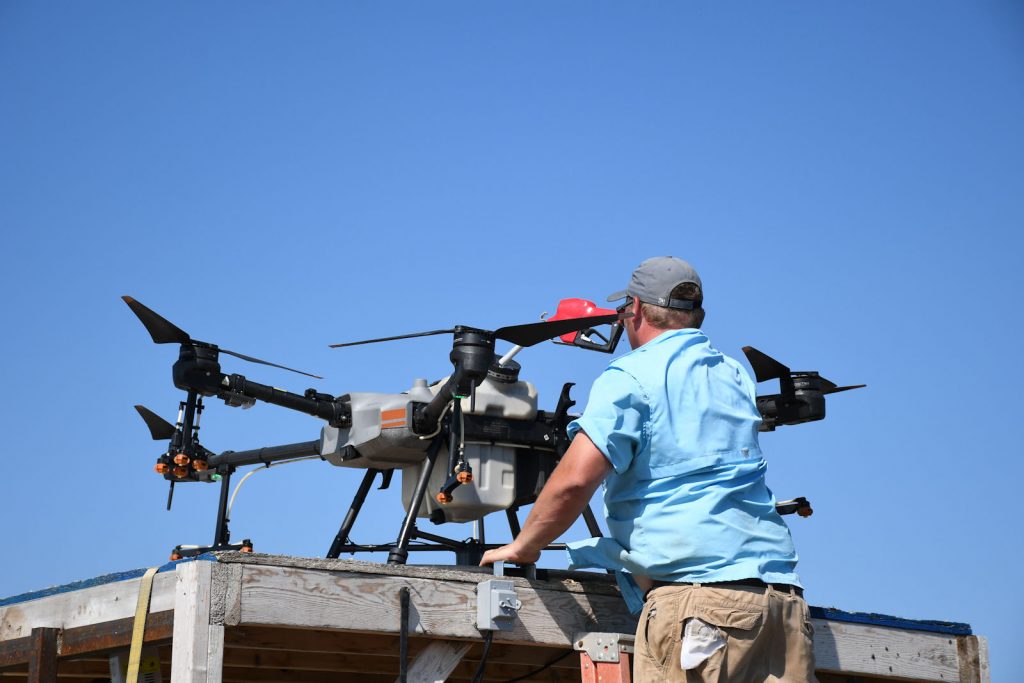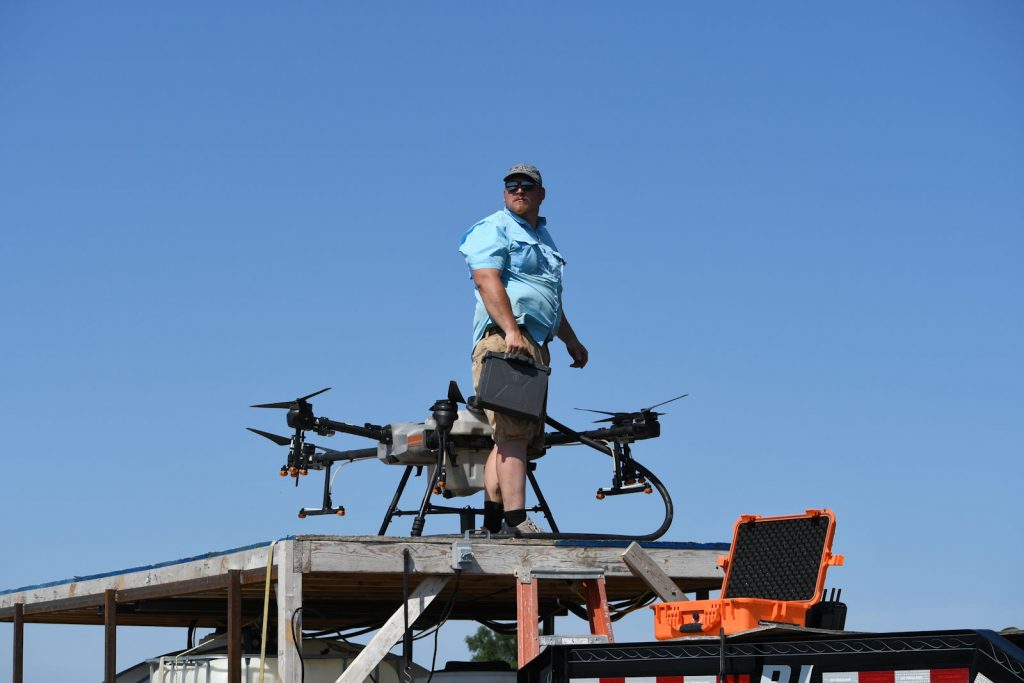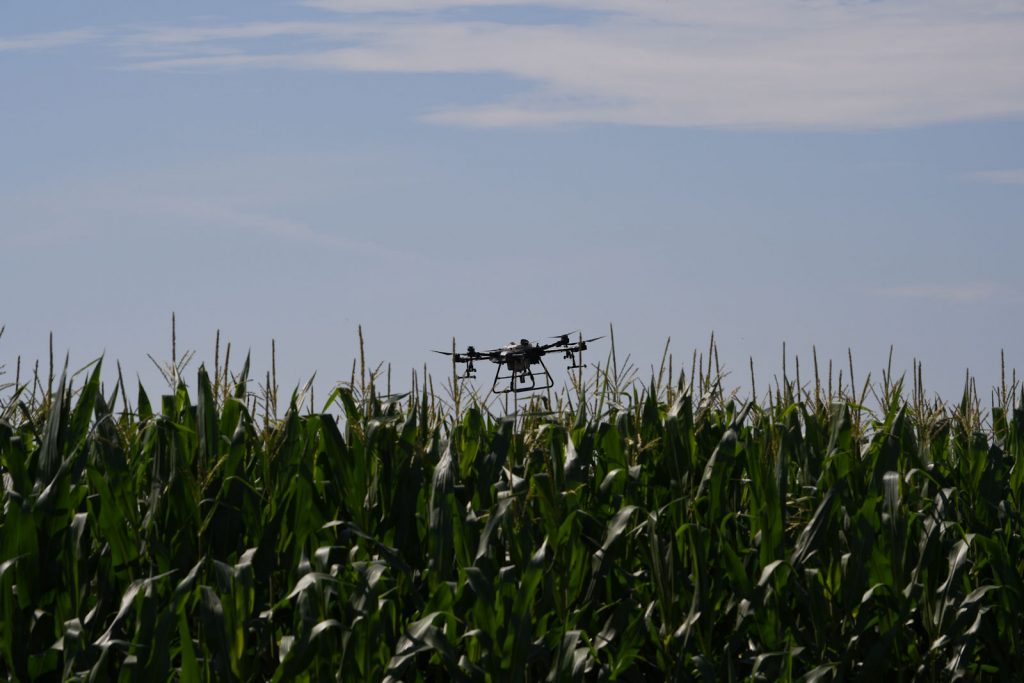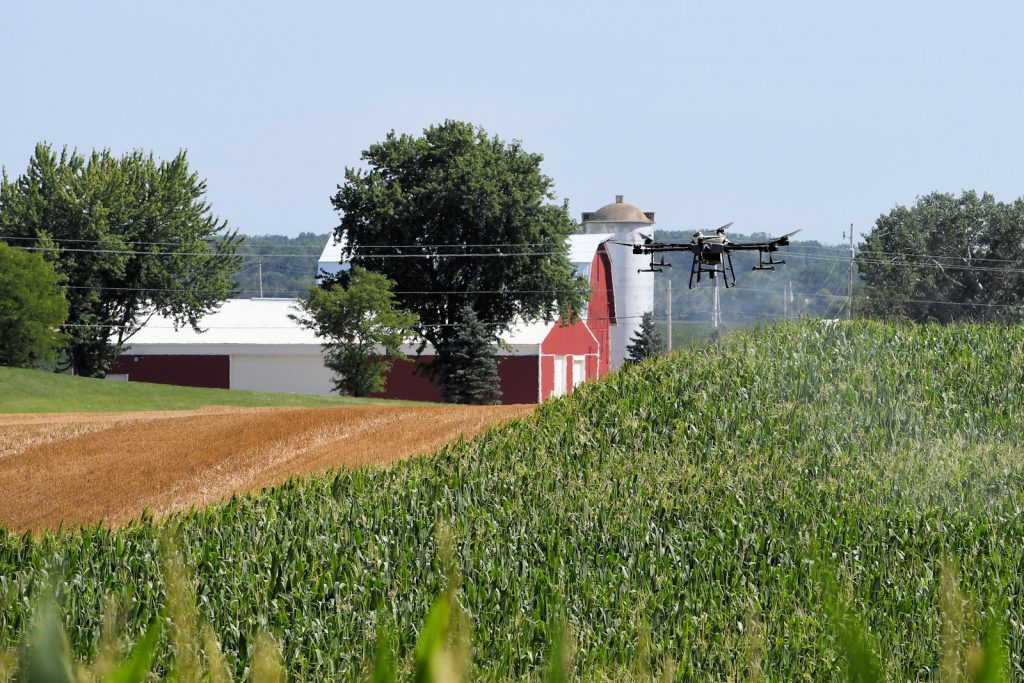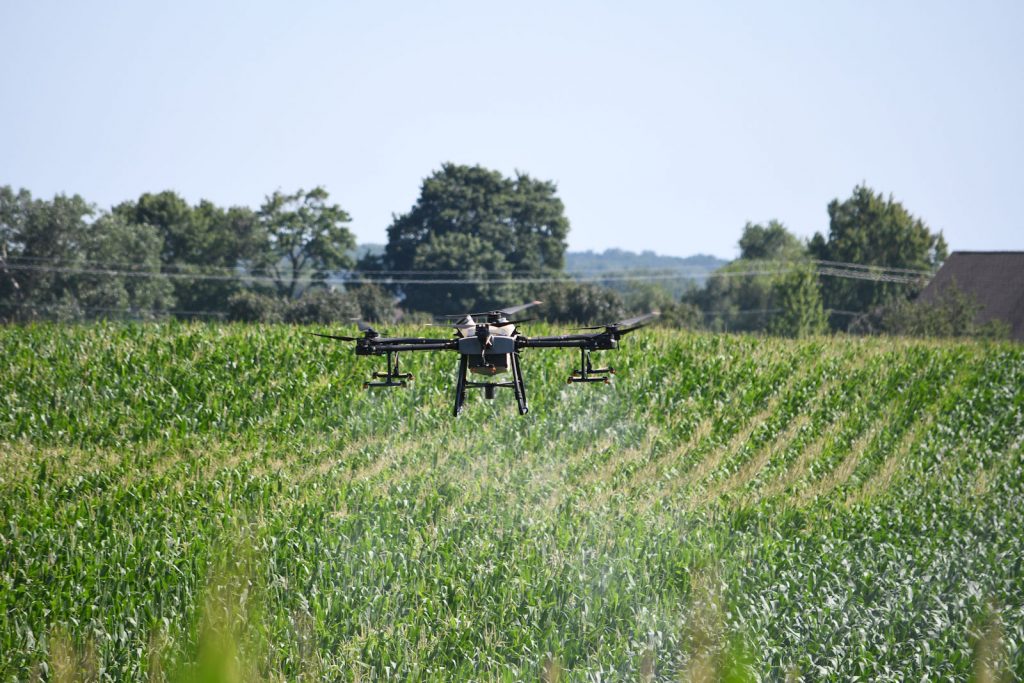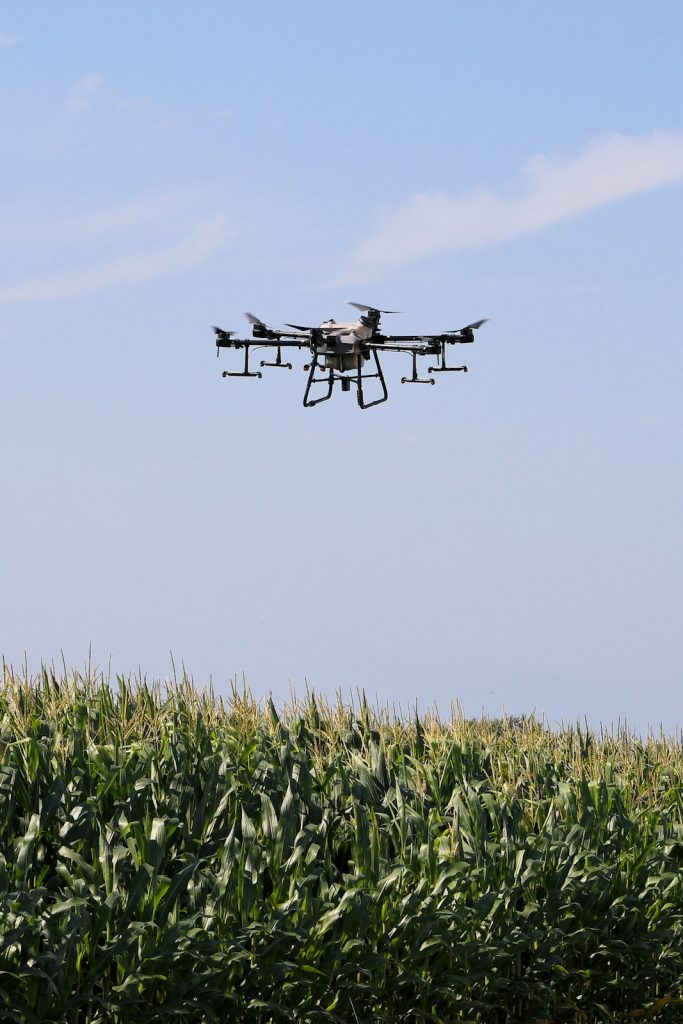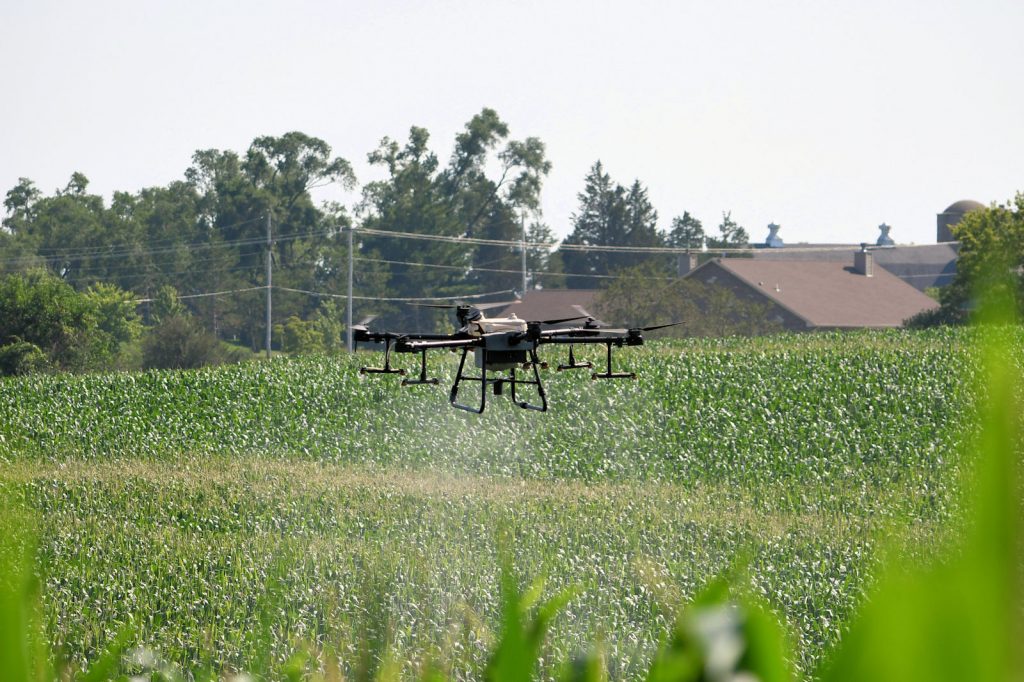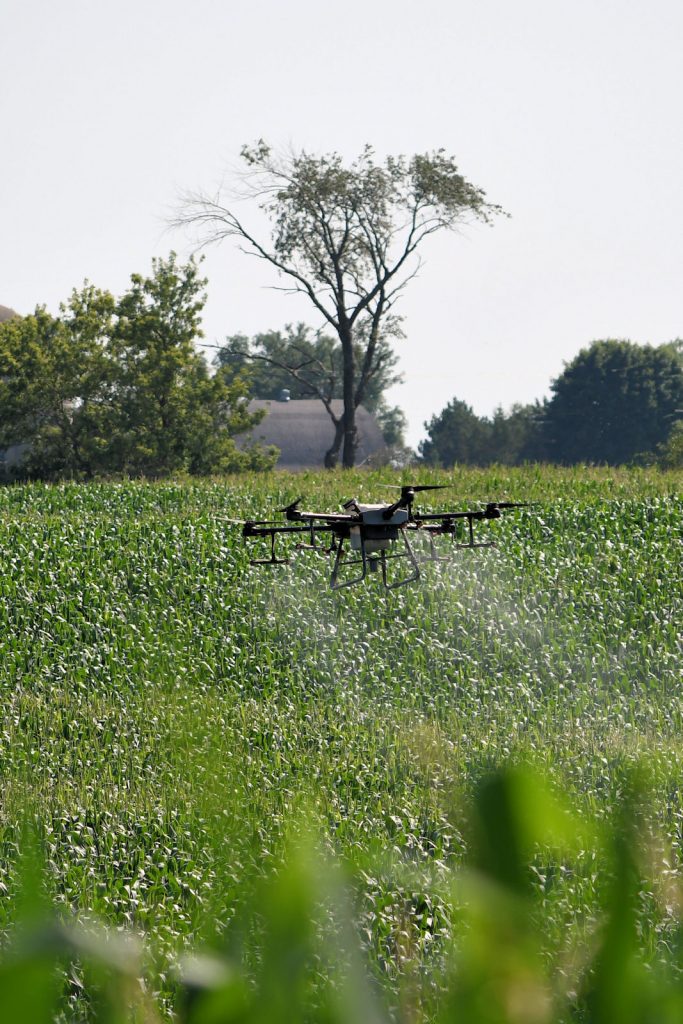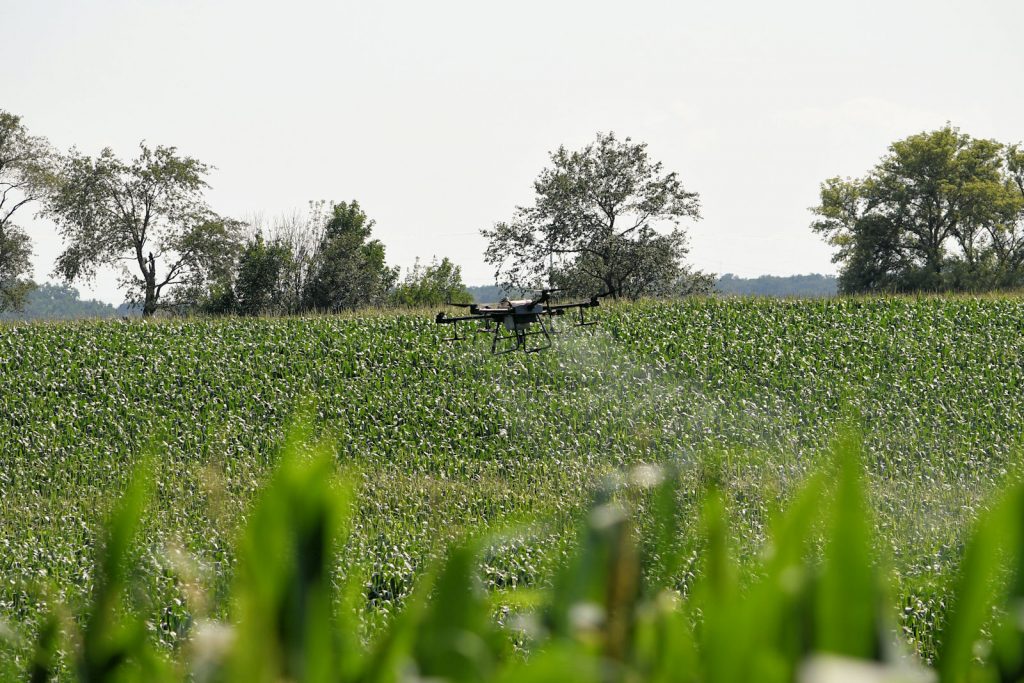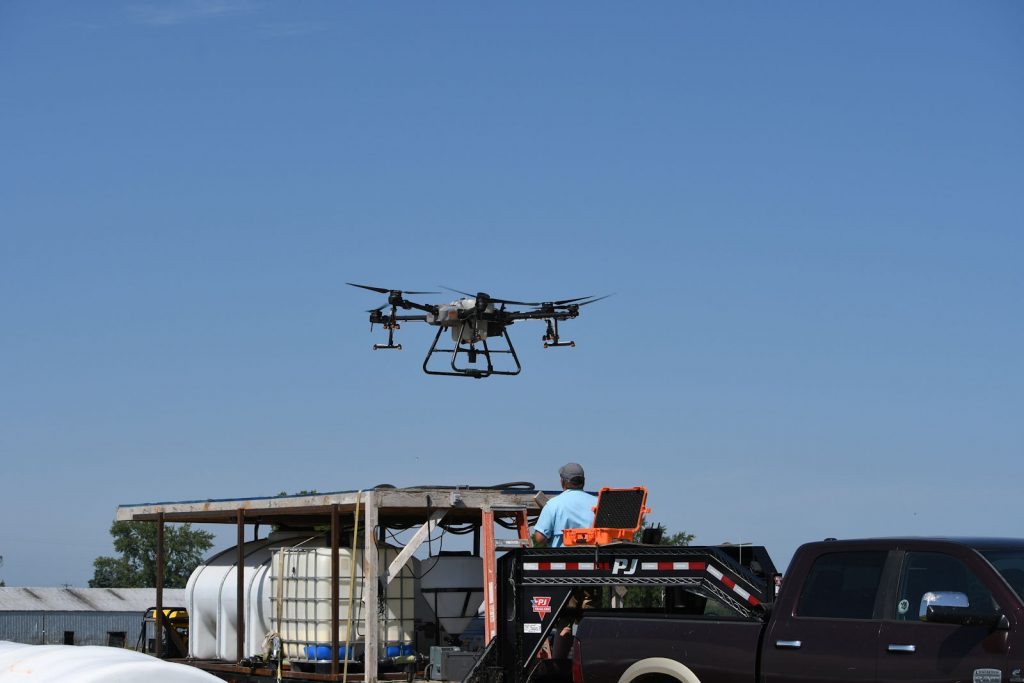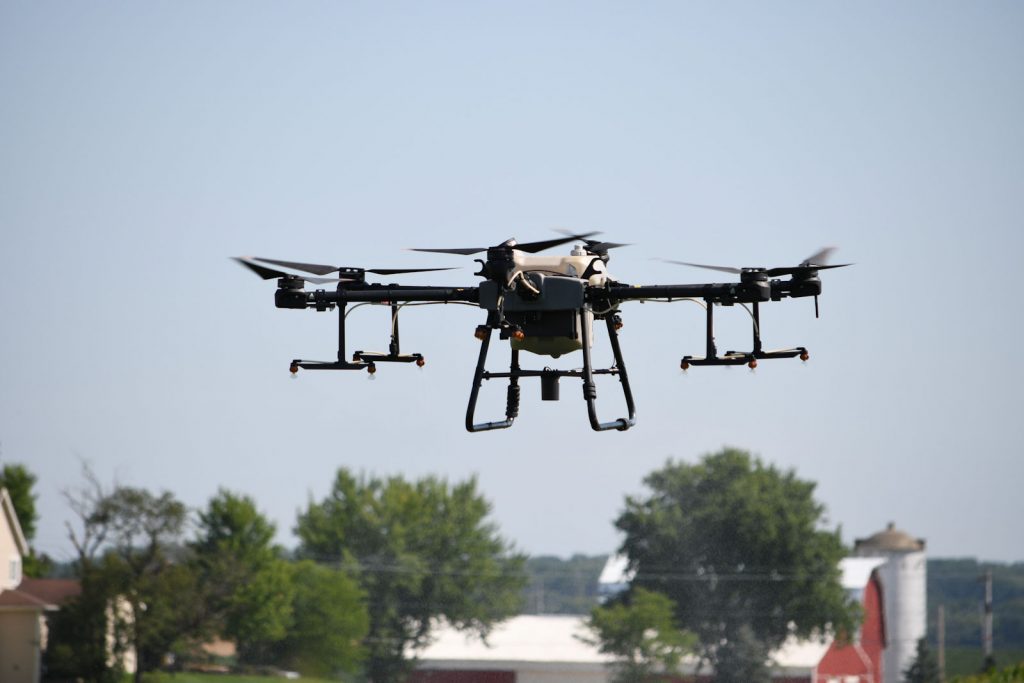DJI T-30 Drone Sprays Crops

We visited Beth’s family in Wisconsin in July 2023. One of her six brothers is still running the family dairy farm. He has several hundred acres of crops growing, and they need to be sprayed with pesticides and fungicides.
In the past, this involved small acrobatic crop-duster airplanes that swooped in and out of the fields just feet above the crops. Now, there are special drones with 7-gallon tanks and sprayers that can cover 100 acres in just over an hour.
The drones used today are DJI model T-30 agri spray models. Before starting, the operator outlines the fields with a map on the computer. Then, the computer programs the flight paths for each drone and they steer themselves up and down the rows of crops even a half mile away as they send live video back to the computer. They even turn around at the end of each row and line themselves up on the next row to minimize overlapping or missed areas. It’s especially impressive that there are two drones running at the same time. Amazing!
Each battery lasts less than 10 minutes, so they have to come back to the launch pad for a change of battery and spray refill. Then, they’re off for more spraying while the first battery gets a fast recharge. By rotating 3 or 4 batteries, it’s a continuous operation.
